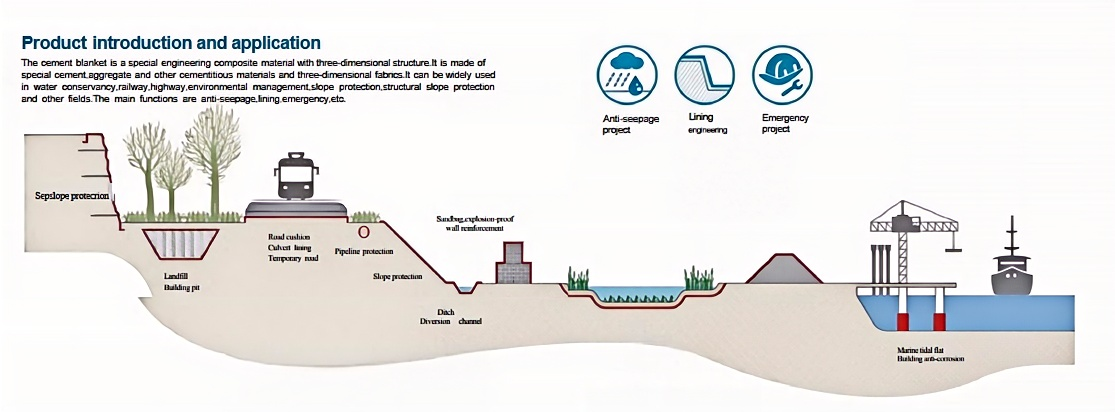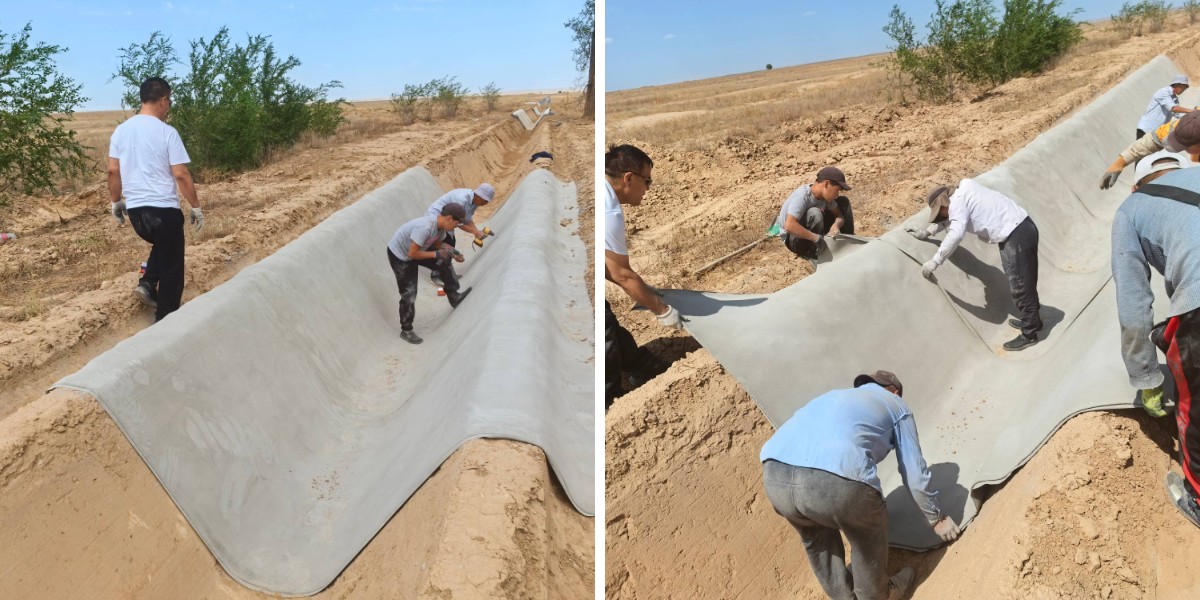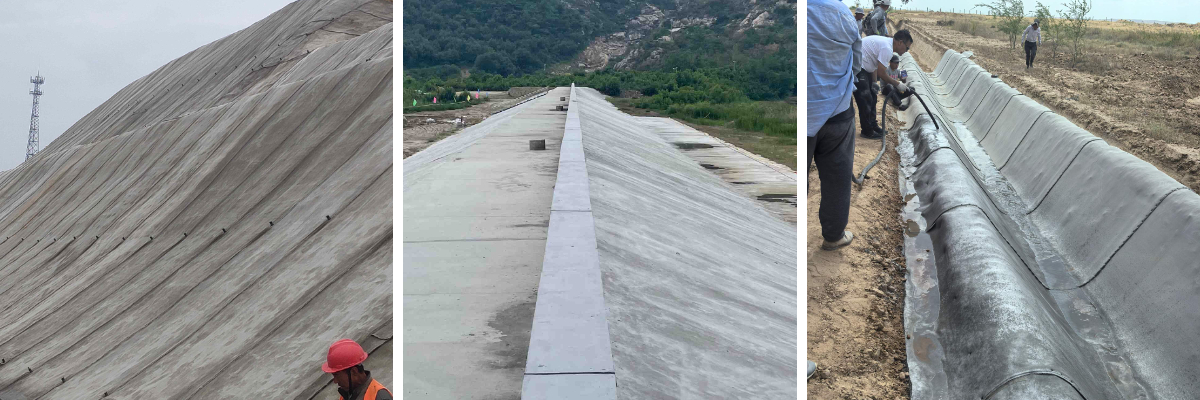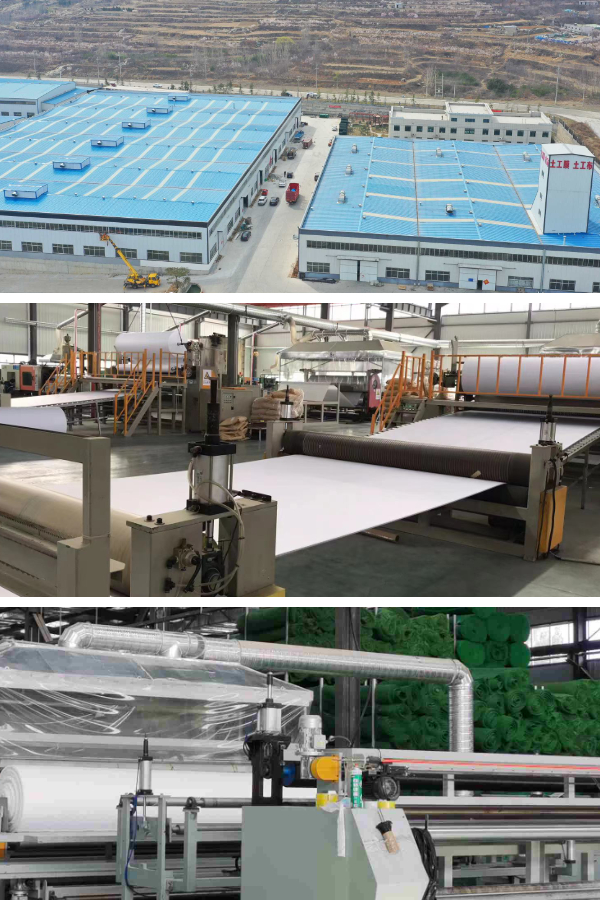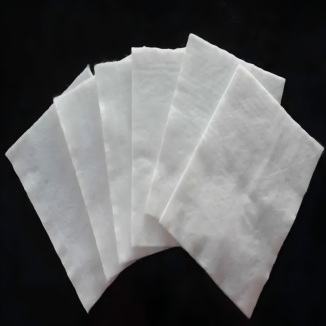How Does Concrete Impregnated Fabric Work? The Science Explained
In the world of building and repair, innovation frequently lies in substances that mixture flexibility with strength—and concrete impregnated cloth is a high example. Also regarded as Concrete Ditch Liner or Fast-Setting Concrete Cloth, this fabric transforms from a lightweight, bendy sheet into a rigid, long lasting concrete structure when activated. But what’s the science at the back of this high-quality transformation? This information breaks down how concrete impregnated material works, exploring its composition, activation process, and the mechanical concepts that make it a game-changer for initiatives ranging from emergency repairs to everlasting structures. We’ll additionally spotlight its real-world functions and why it’s turning into a go-to desire for engineers and DIY fanatics alike.
What Is Concrete Impregnated Fabric, Anyway?
Concrete impregnated cloth is a composite cloth that combines a woven or non-woven cloth matrix with a dry concrete mix. The textile—typically made from long lasting polypropylene or polyester—acts as a service and reinforcement, whilst the concrete combine (composed of cement, aggregates, and additives) presents electricity as soon as activated. Unlike ordinary concrete, which requires mixing and pouring, this material arrives geared up to use: lightweight, rollable, and effortless to transport to even hard-to-reach sites.
Two frequent editions are Concrete Ditch Liner (a branded kind of concrete impregnated fabric) and Fast-Setting Concrete Cloth, which prioritizes speedy hardening for time-sensitive projects. Both share the identical core design: a bendy material infused with concrete that prompts with water, turning into a solid, load-bearing shape in hours.
The Science Behind Concrete Impregnated Fabric: Activation & Hardening
The magic of concrete impregnated material lies in its activation and hardening process, which leverages the chemistry of cement hydration and the physics of material reinforcement. Here’s a step-by-step breakdown of the science:
1. Composition: The Perfect Blend of Textile and Concrete
At its core, concrete impregnated material has three key layers: a pinnacle protecting textile, a center layer of dry concrete mix, and a backside permeable layer. The pinnacle layer shields the concrete from particles and UV radiation at some point of storage, whilst the backside layer approves water to evenly distribute thru the material. The cloth matrix is woven in a way that creates pockets for the concrete mix, making sure it stays evenly distributed—no clumping or unevenness when activated.
For Fast-Setting Concrete Cloth, the concrete combine consists of accelerators that velocity up hydration (the chemical response that hardens cement). This makes it perfect for emergency repairs, the place speedy power achieve is critical.
2. Activation: Adding Water to Trigger Hydration
Concrete hardens via hydration—a chemical response between cement and water. When concrete impregnated cloth is sprayed or misted with water, the permeable backside layer lets in water to seep into the dry concrete mix. The water reacts with the cement particles, forming calcium silicate hydrate (CSH)—the glue that binds the aggregates collectively and offers concrete its strength.
The cloth matrix performs a indispensable here: it holds the concrete combine in area as hydration occurs, stopping the moist concrete from jogging off slopes or vertical surfaces. This is why Concrete Ditch Liner can be utilized to walls, ceilings, or steep slopes except the want for varieties (unlike common concrete).
3. Hardening: From Flexible Fabric to Rigid Structure
As hydration progresses, the concrete combine in the cloth hardens, and the fabric matrix acts as reinforcement. Traditional concrete is robust in compression however susceptible in anxiety (prone to cracking), however the woven material provides tensile strength—stopping cracks from spreading. This composite motion creates a fabric that’s each robust and flexible: it can stand up to minor actions (like thermal expansion) barring breaking, making it greater long lasting than simple concrete.
For Fast-Setting Concrete Cloth, hydration is whole in a depend of hours (compared to days for standard concrete). Within 24 hours, it reaches most of its last strength, permitting tasks to go ahead quickly.
Key Advantages: Why Concrete Impregnated Fabric Stands Out
The special science of concrete impregnated material offers it wonderful benefits over usual concrete and different restore materials. Here’s why it’s gaining popularity:
1. Flexibility During Installation, Rigidity After Hardening
Unlike inflexible concrete forms, concrete impregnated cloth can be reduce to size, draped over irregular shapes, or wrapped round pipes and posts. It conforms to curves, corners, and uneven surfaces—making it perfect for repairing broken culverts, preserving walls, or bridge abutments. Once hardened, it will become a rigid, monolithic shape that’s simply as robust as usual concrete.
2. Fast Installation & Minimal Labor
Fast-Setting Concrete Cloth cuts challenge time dramatically. There’s no mixing, no pouring, and no ready for varieties to be removed. A single employee can deploy a roll of Concrete Ditch Liner in minutes, spraying it with water and letting it harden. This reduces labor charges and downtime—critical for avenue repairs, the place closing lanes for days isn’t feasible.
3. Durability & Weather Resistance
The aggregate of concrete and cloth reinforcement makes concrete impregnated material particularly durable. It resists UV radiation, chemical corrosion, and abrasion—even in harsh environments like industrial websites or coastal areas. The fabric additionally prevents water from seeping into cracks, lowering freeze-thaw injury in bloodless climates.
Real-World Applications of Concrete Impregnated Fabric
Concrete impregnated cloth is versatile, with makes use of throughout construction, repair, and emergency response. Here are its most frequent applications:
1. Emergency Repairs
When a pipe bursts, a holding wall collapses, or a street develops a pothole, Fast-Setting Concrete Cloth is the perfect solution. It can be wrapped round damaged pipes to quit leaks, draped over broken partitions to stabilize them, or reduce to in shape potholes—hardening in hours to fix functionality. Emergency crews frequently preserve rolls on hand for quick, brief (or even permanent) fixes.
2. Infrastructure Maintenance
Highways, bridges, and culverts gain from Concrete Ditch Liner for maintenance. It’s used to line culverts to forestall erosion, restore concrete barriers, and make stronger bridge abutments. Its flexibility permits it to adapt to the present structure, warding off the want for high-priced demolition and reconstruction.
3. Landscape & Environmental Projects
In landscaping, concrete impregnated material creates long lasting paths, holding walls, or erosion manipulate barriers. It can be fashioned into curved planters or used to stabilize slopes in gardens, mixing performance with aesthetics. For environmental projects, it strains drainage ditches to forestall soil erosion whilst permitting water to filter via (when the usage of permeable variants).
4. Military & Remote Site Construction
The lightweight, transportable nature of concrete impregnated cloth makes it best for army or faraway construction. Soldiers can lift rolls of Fast-Setting Concrete Cloth to construct brief bunkers, barriers, or runways in the field. It’s additionally used in catastrophe zones to rapidly assemble shelters or restore broken infrastructure.
How to Use Concrete Impregnated Fabric: A Quick Guide
Using concrete impregnated cloth is straightforward, even for beginners. Here’s a simplified set up process:
1. Prepare the Surface: Clean the place of debris, oil, or free material. For repairs, clean difficult edges to make certain the cloth adheres properly.
2. Cut to Size: Measure the vicinity and reduce the concrete impregnated material with scissors or a utility knife, leaving a small overlap (2-3 inches) for seams.
3. Position the Fabric: Drape or lay the cloth over the surface, making sure it’s flat and free of wrinkles. For vertical surfaces, use staples or pins to maintain it in location temporarily.
4. Activate with Water: Spray or mist the material evenly with water—avoid over-saturating (which can weaken the concrete). The cloth will darken as it absorbs water.
5. Allow to Harden: Let the material set undisturbed. Fast-Setting Concrete Cloth will be walkable in a few hours; full electricity is reached in 24-48 hours.
Conclusion: The Future of Concrete Is Flexible
Concrete impregnated fabric—from Concrete Ditch Liner to Fast-Setting Concrete Cloth—reinvents concrete by using combining the power of common cement with the flexibility of textiles. Its science-backed plan leverages hydration chemistry and composite reinforcement to create a cloth that’s handy to install, quick to harden, and long lasting ample for even the hardest projects.
Whether you’re repairing a broken pipe, stabilizing a slope, or constructing a transient structure, concrete impregnated cloth affords a smarter choice to usual concrete. By grasp its science and advantages, you can select the proper product for your venture and revel in faster, greater cost effective results. The future of development isn’t simply strong—it’s flexible, too.
Contact Us
Company Name: Shandong Chuangwei New Materials Co., LTD
Contact Person :Jaden Sylvan
Contact Number :+86 19305485668
WhatsApp:+86 19305485668
Enterprise Email: cggeosynthetics@gmail.com
Enterprise Address: Entrepreneurship Park, Dayue District, Tai 'an City,
Shandong Province


